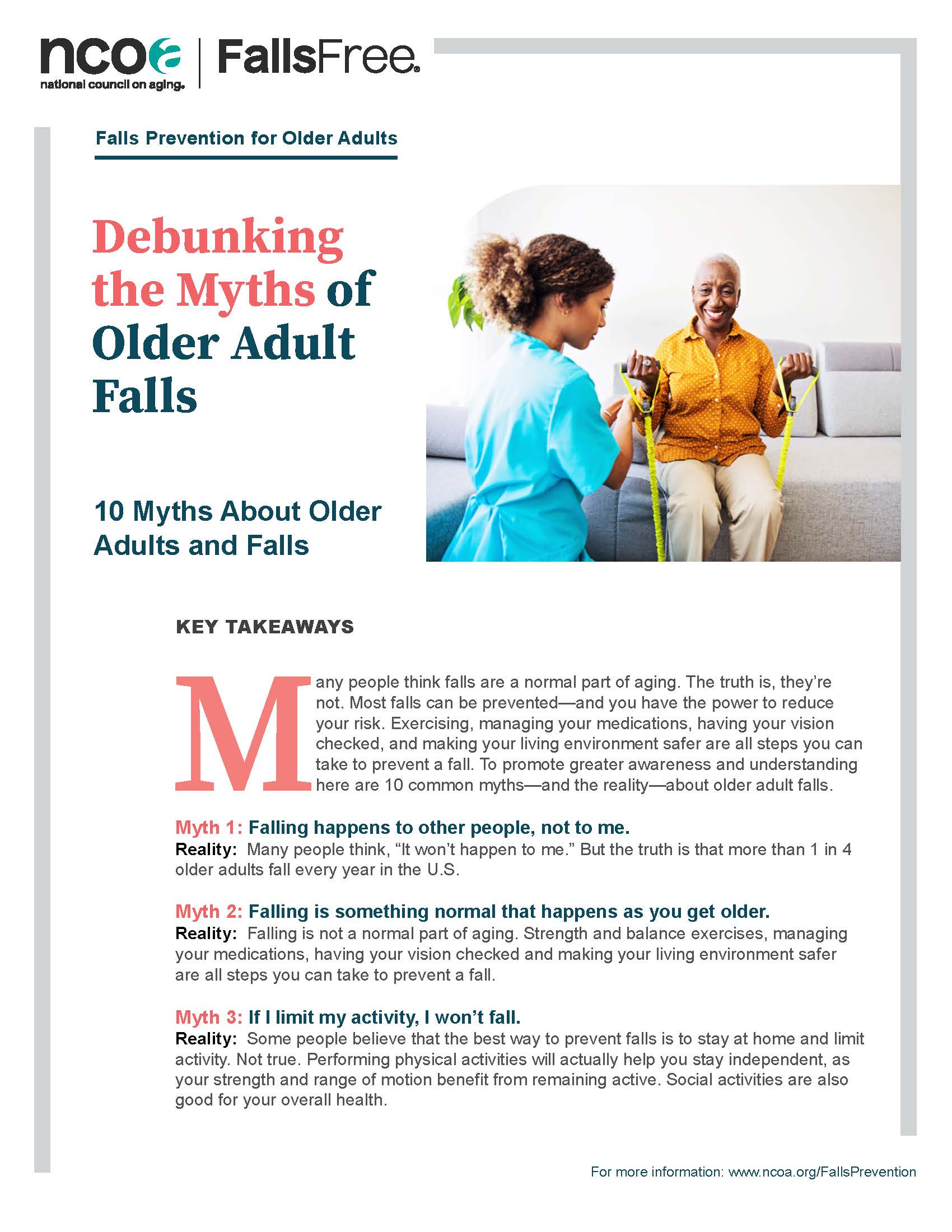Fall Prevention Resources

Many people think, “It won’t happen to me.” But the truth is that more than 1 in 4 older adults fall every year in the U.S.
Many people think falls are a normal part of aging. The truth is, they’re not. Most falls can be prevented—and you have the power to reduce your risk.
Download “Debunking the Myths of Older Adult Falls”
Facts on Falls
From the U.S. Centers for Disease Control and Prevention (CDC)
- Each year, millions of older people fall - but less than half tell their doctor.2
- Falling once doubles your chances of falling again.3
- One out of five falls causes a serious injury such as broken bones or a head injury.4,5
- Each year, 3 million older people are treated in emergency departments for fall injuries.6
- Over 800,000 patients a year are hospitalized because of a fall injury, most often because of a head injury or hip fracture.6
- Each year at least 300,000 older people are hospitalized for hip fractures.7
- More than 95% of hip fractures are caused by falling,8 usually by falling sideways.9
- Falls are the most common cause of traumatic brain injuries (TBI).10
- In 2015, the total medical costs for falls totaled more than $50 billion.11 Medicare and Medicaid shouldered 75% of these costs.
Preventing Falls
The good news is that most falls are preventable. Start by watching this video that covers six steps older Americans can implement today.
Download a List of the 6 Steps
Are you at risk for a fall?
Follow this link to answer 13 simple questions to get your falls risk score and resources to prevent falls.
Are you a caregiver?
Here is a guide to empower your conversations with your loved one about fall risk and prevention.
